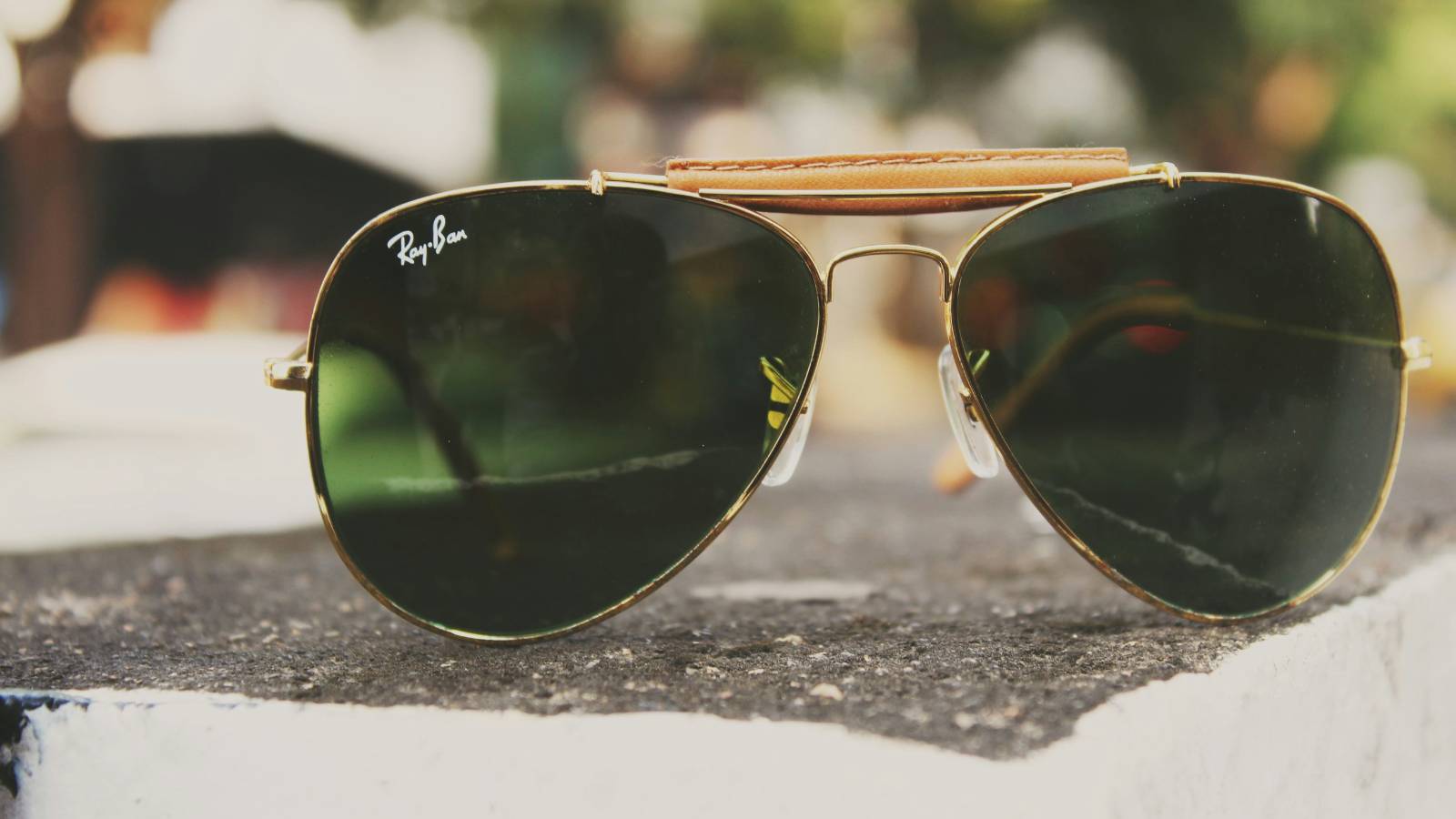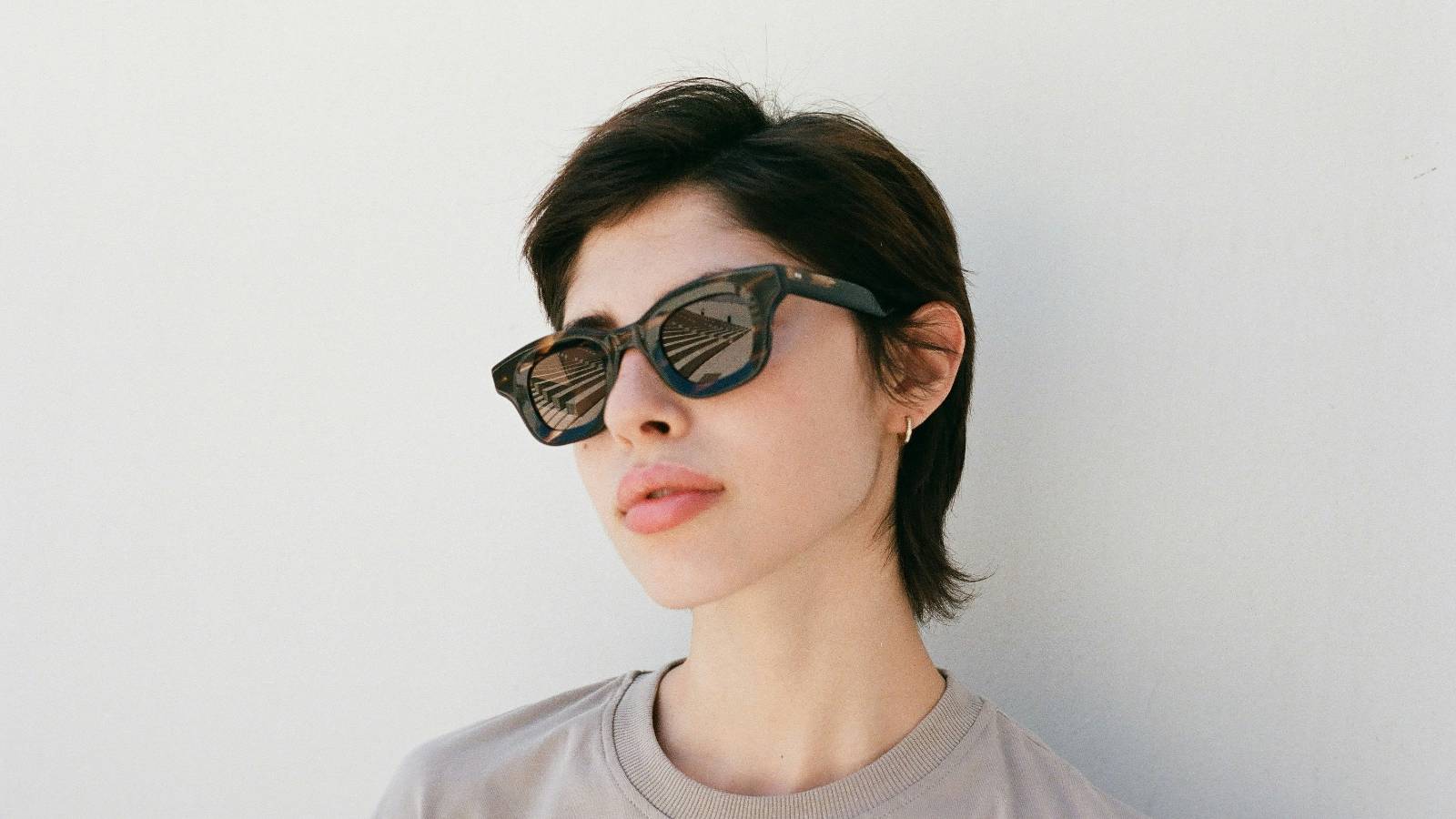Over three consecutive days, I wore each pair from breakfast through to evening drinks, subjecting them to everything a proper beach holiday throws at eyewear.
Three Days, Three Aviators: Beach Testing Premium Polarised Sunglasses
There's something rather revealing about testing sunglasses in their natural habitat. Not under the artificial lighting of a shop, not during a brief weekend jaunt, but properly tested across full days under relentless Mediterranean sun. I spent a week on the Greek islands with three premium polarised aviators in my bag: the Carrera 1055/S, Armani Exchange AX2002, and the iconic Ray-Ban 3025 Aviator. Each pair claimed superior glare reduction, exceptional comfort, and timeless style. Each sat at a similar price point. The question was simple: which would actually deliver when it mattered most?
Over three consecutive days, I wore each pair from breakfast through to evening drinks, subjecting them to everything a proper beach holiday throws at eyewear. Saltwater spray, Factor 50 residue, hours of direct sunlight, transitions from blazing beach to shaded tavernas, and the crucial test of whether you'd actually want to keep them on your face for twelve hours straight. What follows is an honest account of how each performed.
Day One: Carrera 1055/S W3J 9K 62
The Carrera 1055/S announces itself immediately. That Gold Stripped Red frame isn't shy, and the green shaded polarised lenses give the world a pleasantly warm, filtered quality that feels oddly cinematic. These are squared aviators rather than traditional teardrops, which gives them a more contemporary, architectural look. Slipping them on at breakfast, I was immediately struck by how the metal and acetate construction felt reassuringly substantial without being heavy.
Walking down to the beach that first morning, the polarisation kicked in beautifully. The Aegean's notorious glare, which usually has you squinting despite sunglasses, simply vanished. Looking out across the water, I could see definition in the waves rather than just a blinding sheet of reflected light. The green tint enhanced contrast pleasantly without distorting colours to the point where everything looked alien. My partner's turquoise bikini still looked turquoise, the sand still looked appropriately golden, but the harsh brightness had been tamed into something far more comfortable.
Comfort became the real test as the day progressed. By mid-morning, with temperatures pushing thirty degrees, I'd been wearing them for three hours straight. The squared shape sat well on my face, and the nose pads distributed weight evenly without creating pressure points. During a particularly enthusiastic game of beach volleyball, they stayed firmly in place despite the running and jumping. The acetate tips gripped without pinching, even when I'd worked up a proper sweat.
Lunch at a beachside taverna provided an interesting transition test. Moving from blazing sunlight into the relative shade of a covered terrace, the green lenses adapted well. I didn't feel the need to whip them off immediately, which often happens with very dark lenses. The polarisation meant I could still read my phone screen easily, something that cheaper sunglasses often struggle with due to the way polarised lenses interact with LCD displays.
The afternoon brought more intensive testing. Lying on a sunbed reading, the Carreras excelled. The glare reduction meant no awkward head positioning to avoid reflected light from the page. Swimming in the sea, I kept them perched on my head, and the mixed metal and acetate construction felt durable enough to handle the saltwater exposure without immediate panic about corrosion. After rinsing them under fresh water, they cleaned up perfectly with no water spots or residue issues.
As evening approached and we moved to a beach bar for pre dinner drinks, the green lenses proved their versatility. Even as the light softened and turned golden, they didn't make everything too dark. I wore them through sunset and only removed them once proper twilight arrived. After a full day, roughly twelve hours of wear, they'd left no red marks on my nose or temples. The frame hadn't loosened or felt less secure despite the heat and activity.
The standout feature was undoubtedly the polarisation quality. Carrera's reputation for pushing boundaries felt justified. The only minor drawback was that the distinctive gold and red frame, whilst undeniably stylish, did make a statement that wouldn't suit every outfit or mood. These are confident sunglasses that require you to own the look.
Day Two: Armani Exchange AX2002
Switching to the Armani Exchange AX2002 on day two felt like moving from flamboyant Italian sportswear to sleek minimalism. The polished gunmetal finish and black acetate brow create a far more understated aesthetic. Where the Carreras announced themselves, the AX2002 whispered sophistication. The flat-top brow design gives these aviators a distinctly masculine, architectural quality that felt immediately more versatile.
The first thing I noticed was the self-adjusting nose pads. Rather than fixed pads that either work for your nose or don't, these responded to my face shape automatically. It's a subtle feature that makes a significant difference to comfort. From the moment I put them on, they simply sat correctly without any fiddling or adjustment. After yesterday's Carreras, which were comfortable but required a brief settling period, the AX2002 felt instantly right.
The grey gradient lenses offered a completely different visual experience to the Carrera's green tint. Gradient lenses are darker at the top and lighter at the bottom, which theoretically provides better protection from overhead sun whilst allowing more light through when looking down. In practice, this worked brilliantly. Looking up at the sky or out across the horizon, I got maximum glare protection. Glancing down at my phone, the lighter lower portion meant I didn't feel like I was peering through dark glass.
Beach activities revealed the AX2002's all-round competence. During morning yoga on the sand, they stayed perfectly positioned through downward dogs and sun salutations. The balanced weight distribution and those self-adjusting nose pads meant they didn't slide despite me being upside down periodically. Swimming later, I again kept them on my head, and the gunmetal finish felt reassuringly durable. The black acetate tips showed no signs of degradation from sun cream or salt exposure.
The real revelation came during an afternoon exploring the island's main town. Moving between bright outdoor squares and dim shop interiors, the gradient lenses proved their worth. Stopping for lunch at a harbour-side restaurant, I kept them on throughout the meal without feeling like I was being antisocial or unable to see my food properly.
Style-wise, the flat-top brow design attracted several compliments. There's something distinctly contemporary about that strong horizontal line, yet the overall aviator shape keeps them grounded in classic menswear. They paired equally well with swim shorts and a linen shirt as they would with smarter casual evening wear. The A|X logo lasered on the temples and the discreet brand marking on the upper left lens felt appropriately subtle rather than shouty.
By evening, after another full day of wear, the comfort factor remained impressive. Where some sunglasses start feeling like an imposition after eight hours, the AX2002 maintained that initial "barely there" sensation. The polarised grey gradient lenses performed beautifully as the sun lowered, never feeling too dark or making the golden hour look muddy. The only consideration was that gradient lenses, whilst brilliant for varied conditions, don't offer quite the same intense glare reduction at all angles as uniform dark lenses. For pure beach glare elimination, yesterday's Carreras had a slight edge.
Day Three: Ray-Ban 3025 Aviator Polarized
There's a reason the Ray-Ban 3025 is called iconic. Slipping them on felt like wearing a piece of design history. These are the aviators, the template every other manufacturer references. Originally designed for US Air Force pilots, they've transcended their functional origins to become arguably the most recognisable sunglasses silhouette in the world. The question was whether that heritage translated into actual performance or whether I'd simply be paying for brand recognition.
The immediate answer was reassuring. The build quality felt exceptional. Where cheaper aviators can feel tinny or flimsy, the 3025 had a satisfying heft and solidity. The classic teardrop lens shape, larger than either the Carrera's squared design or the AX2002's flat-top profile, provided comprehensive coverage. Looking in the mirror that morning, they simply looked right in a way that's difficult to quantify but immediately recognisable.
The polarised lenses delivered on Ray-Ban's promise of enhanced colours and contrast. Walking to the beach, everything appeared sharper and more defined. The deep blue of the sea looked richer, the white of the beach umbrellas appeared crisper, and the whole world seemed to have gained resolution. The glare reduction was exceptional, on par with the Carrera and superior to the gradient approach of the Armani Exchange when looking directly at reflective surfaces.
Comfort-wise, the 3025 benefited from decades of refinement. The nose pads, whilst not self-adjusting like the AX2002, were positioned perfectly for average face shapes. The temples curved gently to grip without pressure, and the weight distribution felt utterly neutral. These are sunglasses designed to disappear once you're wearing them, and they largely succeeded. The only slight consideration was that the larger teardrop lenses made them fractionally heavier than the more compact modern designs, though we're talking marginal differences.
Beach activities revealed the 3025's all-round competence. Swimming, throwing a rugby ball around, using my phone or lying in the sun, they performed without drama. The polarisation meant I could see beneath the water's surface when swimming, spotting fish and rocks that would normally be obscured by surface glare. Reading on the sunbed, text appeared crisp and clear with no colour distortion that might cause eye strain over extended periods.
The style factor deserves its own discussion. These sunglasses are so ubiquitous that they risk feeling generic, yet somehow they don't. Perhaps it's the quality of the original that sets them apart from countless imitators, or perhaps the design is simply good enough to transcend trendiness. Moving from beach to lunch to afternoon drinks, they worked in every context. They're neutral in the best sense, complementing rather than dominating your overall look.
As the day progressed into evening, the 3025 maintained its comfort and performance. The uniform dark lenses meant I removed them slightly earlier than the gradient AX2002 as light levels dropped, but they'd done their job brilliantly throughout the bright hours. After a full day of Mediterranean sun, they'd protected my eyes completely whilst requiring zero thought or adjustment.
The heritage claims felt justified. These aren't just trading on nostalgia; they're genuinely excellent sunglasses that happen to have decades of refinement behind them. The only consideration is that they're perhaps less distinctive than more contemporary designs. If you want sunglasses that make a statement, the Carrera wins. If you want something quietly excellent that works with everything, the Ray-Ban delivers.
Head to Head Comparison
After three days of intensive real-world testing, clear winners emerged in specific categories. Here's how they stack up:
| Category | Carrera 1055/S | Armani Exchange AX2002 | Ray-Ban 3025 | Winner |
|---|---|---|---|---|
| Glare Reduction | Exceptional - green tint enhances contrast | Very good - gradient limits consistent coverage | Exceptional - uniform excellence | Tie: Carrera/Ray-Ban |
| All-Day Comfort | Very good - slight settling required | Excellent - self-adjusting nose pads | Excellent - refined ergonomics | Tie: AX2002/Ray-Ban |
| Style Versatility | Bold statement - requires confidence | Contemporary sophistication | Timeless classic - works with everything | Ray-Ban |
| Build Quality | Excellent - robust mixed materials | Excellent - premium gunmetal finish | Exceptional - decades of refinement | Ray-Ban |
| Varying Light Performance | Good - uniform dark lens | Excellent - gradient adapts brilliantly | Good - uniform dark lens | Armani Exchange |
| Beach to Bar Transition | Requires earlier removal at dusk | Seamless throughout evening | Requires earlier removal at dusk | Armani Exchange |
| Visual Clarity | Excellent - warm enhanced tones | Excellent - natural colour accuracy | Exceptional - enhanced contrast and colour | Ray-Ban |
| Distinctive Design | High - gold/red frame stands out | Moderate - flat-top brow contemporary | Low - classic but recognisable | Carrera |
For pure polarisation performance and glare reduction, the Carrera 1055/S and Ray-Ban 3025 were neck and neck, both offering exceptional clarity and comfort in bright conditions. The Armani Exchange AX2002's gradient approach, whilst more versatile across varying light, couldn't quite match the others for eliminating intense glare.
Comfort presented a more interesting contest. The Armani Exchange AX2002's self-adjusting nose pads gave it a fractional edge for immediate, out-of-the-box comfort. The Ray-Ban 3025 matched it closely through sheer design refinement, whilst the Carrera 1055/S, though comfortable, required slightly more settling time to find its optimal position.
Style versatility saw the Ray-Ban 3025 take a clear lead. Its classic design works with virtually any outfit or context, making it the safest choice for someone wanting one pair to do everything. The Armani Exchange AX2002 came second, its contemporary flat-top design offering sophistication without extremes. The Carrera 1055/S, whilst undeniably striking, required the most confidence to pull off with its distinctive frame and green lenses.
Build quality felt exceptional across all three, though the Ray-Ban's decades of refinement were evident in countless tiny details. The polished gunmetal of the Armani Exchange felt premium and durable, whilst the Carrera's mixed material construction proved robust despite initial concerns about complexity.
For lens performance in varying conditions, the Armani Exchange's gradient approach proved most adaptable, transitioning seamlessly from bright beach to shaded interiors. The uniform lenses of the Carrera and Ray-Ban performed brilliantly in consistent bright conditions but required removal sooner in lower light.
The Verdict
After three days of proper testing under challenging conditions, choosing an overall winner feels almost unfair given how well all three performed. However, pressed to pick one pair for a desert island scenario, the Ray-Ban 3025 Aviator Polarized edges ahead through sheer all-round excellence. They combine exceptional optical performance with timeless versatility and proven durability. These are sunglasses you could wear every day for years without tiring of them or feeling they've dated.
That said, the choice depends heavily on what you prioritise. If you want sunglasses that make a statement and offer distinctive style alongside excellent performance, the Carrera 1055/S is genuinely superb. The green shaded lenses and gold frame will turn heads whilst delivering professional-grade glare reduction.
For those seeking the best balance of contemporary design and adaptable performance, particularly if you transition frequently between very bright and more moderate conditions, the Armani Exchange AX2002 offers exceptional value. Those gradient lenses and self-adjusting nose pads create a supremely comfortable, versatile package.
Purists, heritage enthusiasts, or anyone wanting sunglasses that simply work brilliantly without overthinking should choose the Ray-Ban 3025 Aviator Polarized. Seventy years of refinement shows in every detail.
All three are available to compare on SuntekStore.co.uk, where you can ensure you're getting the best price from trusted retailers. Whichever you choose, you're investing in genuinely premium eyewear that will enhance rather than merely tolerate your next beach holiday.
Frequently Asked Questions
Antony Robinson
A multi award winning, international digital marketing strategist, US/UK Search Awards Judge and international conference speaker. Ant is a C-Suite digital strategy consultant with extensive technical and hands on expertise across multiple digital disciplines including Location Marketing, Search Engine Optimisation (SEO), Social Media & Conversion Rate Optimisation (CRO).


